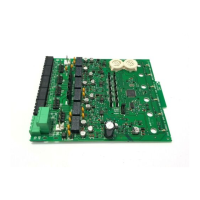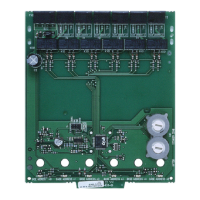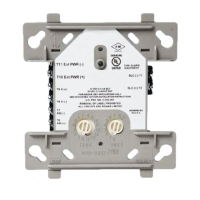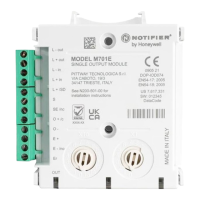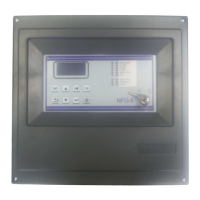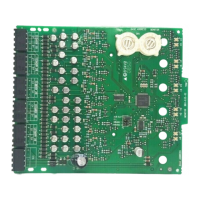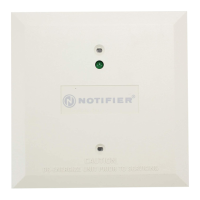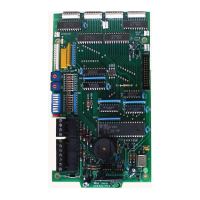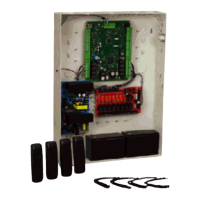12 SCS Series Manual — P/N 15712:L 7/18/16
Section 2: Concepts of Smoke Control
2.1 Introduction
Section 2: serves as a general outline of the concepts, components, and implementation of a smoke control system. The user should be famil-
iar with the following documents, codes, and standards and refer to them for additional information:
• NFPA 92A Smoke Control Systems
• ASHRAE publication entitled Design of Smoke Management Systems
• NFPA 72 National Fire Alarm Code
• NFPA 101 Life Safety Code
• NFPA 90A Installation of Air Conditioning and Ventilation Systems
• NFPA 92B Smoke Control Management Systems in Malls, Atria, and Large Areas
• ULC/ORD-C100-92 Smoke Control System Equipment
2.1.1 Definitions
Following are definitions of terms that are used in this manual.
Automatic Control. A smoke control system operates in this state when initiation occurs automatically from detection of a fire by the fire
detection system.
Buoyancy. The ability or tendency of smoke to rise in air.
Compensated System. A smoke control system where the air injected into a stairtower is modulated or excess pressure is vented depending
on the number of doors opened or closed in the stairtower. This keeps the pressure barrier relatively constant.
Dedicated System. A smoke control system designed for the sole purpose of controlling smoke within a building (equipment is not linked to
building HVAC controls). This is accomplished by forming a system of air movement that is separate and distinct from the building's HVAC
system and only operates to control smoke.
Expansion. The ability or tendency of smoke to spread out and encompass larger areas.
Firefighter's Smoke Control Station. Firefighter's smoke control station (FSCS) includes monitoring and overriding capabilities over
smoke control systems and equipment provided at designated location(s) within the building for the use of the fire department.
Manual Control. A smoke control system operates in this state when controls for the station are changed manually to override automatic
control functions.
Multiple Smoke Control Station (MSCS). Special FSCS application for redundant systems (NCA-2 feature; see Appendix C.3, “Multiple
Smoke Control Station”).
Noncompensated System. A smoke control system where a single speed fan provides pressurization in a stairtower. Pressure will vary
depending on the number of doors opened into the stairtower.
Non-dedicated System. A smoke control system that shares components with other air moving equipment. When the smoke control mode is
activated, the operating of the building's air moving equipment changes in order to accomplish the objectives of the smoke control design.
OFF⁄CLOSED Control (CON
OFF⁄CL
) One of the four protocol points associated with each switch group. A CON
OFF⁄CL
protocol point is
used with an appropriate control module to ensure that a fan is off or a damper is closed. Therefore, when a CON
OFF⁄CL
control module is
active, the fan must be off or the damper must be closed.
OFF⁄CLOSED Verification (VER
OFF/CL
) One of the four protocol points associated with each switch group. A VER
OFF⁄CL
protocol point
is used with an appropriate monitor module to check the off status of a fan or the closed position of a damper. Therefore, when a VER
OFF⁄CL
monitor module is active, the fan is off or the damper is closed.
ON⁄OPEN Control (CON
ON⁄OP
) One of the four protocol points associated with each switch group. A CON
ON⁄OP
protocol point is used
with an appropriate control module to ensure that a fan is on or a damper is open. Therefore, when a CON
ON⁄OP
control module is active, the
fan must be on or the damper must be open.
ON⁄OPEN Verification (VER
ON⁄OP
) One of the four protocol points associated with each switch group. A VER
ON⁄OP
protocol point is used
with an appropriate monitor module to check the on status of a fan or the open position of a damper. Therefore, when a VER
ON⁄OP
monitor
module is active, the fan is on or the damper is open.
Pairing. Pairing is a special SCS application that allows FSCS modules to be grouped so that more than one FSCS module will act as a sin-
gle FSCS module. (See Appendix C.5, “Pairing”.)
Pressurized Stairtowers. A type of smoke control system in which stair shafts are mechanically pressurized with outdoor air to keep smoke
from contaminating them during a fire.
Smoke. The airborne solid particulates and gases evolved when a material undergoes pyrolysis or combustion, together with the quantity of
air that is mixed into the mass.
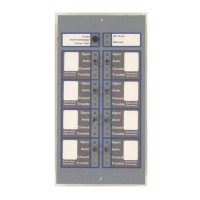
